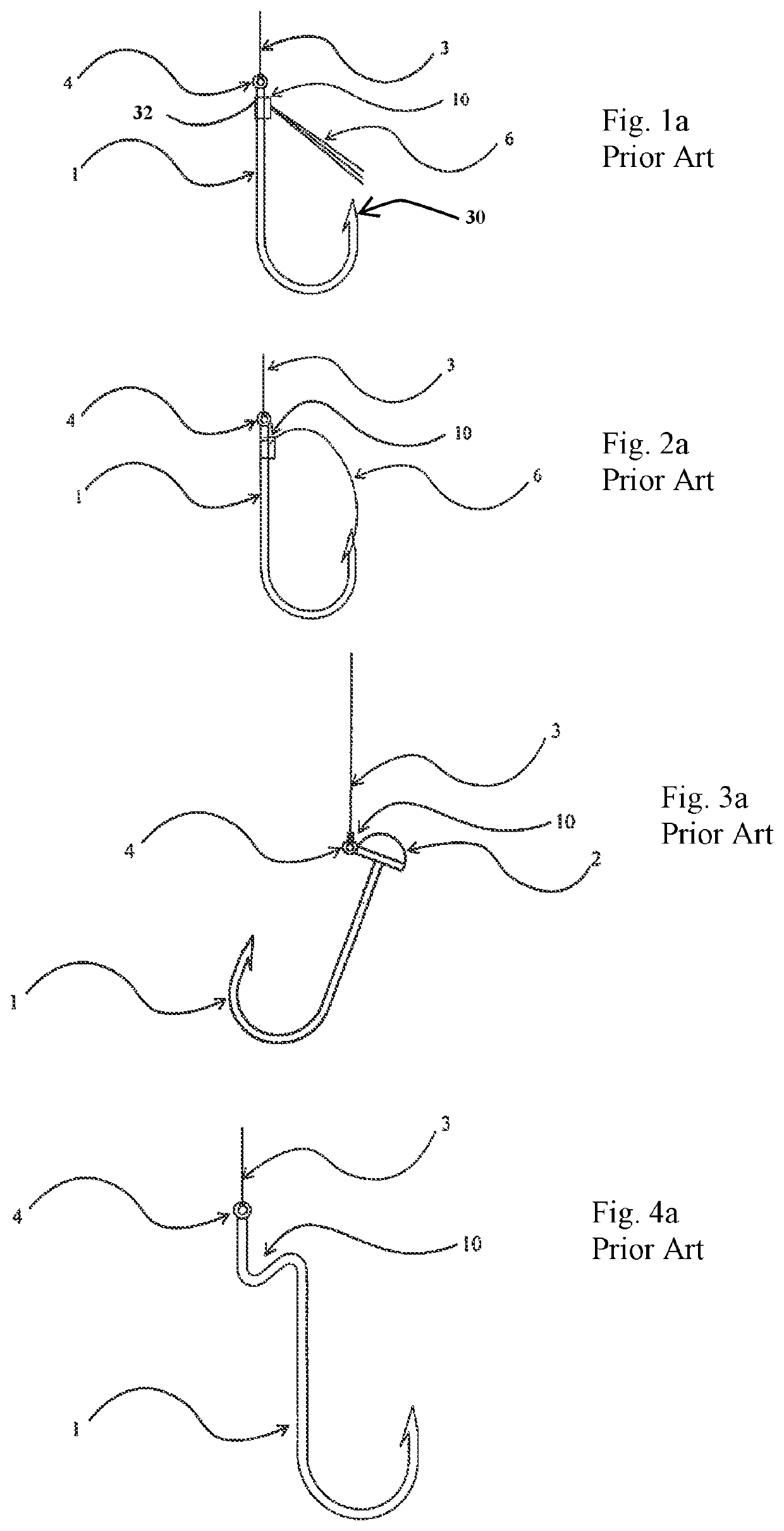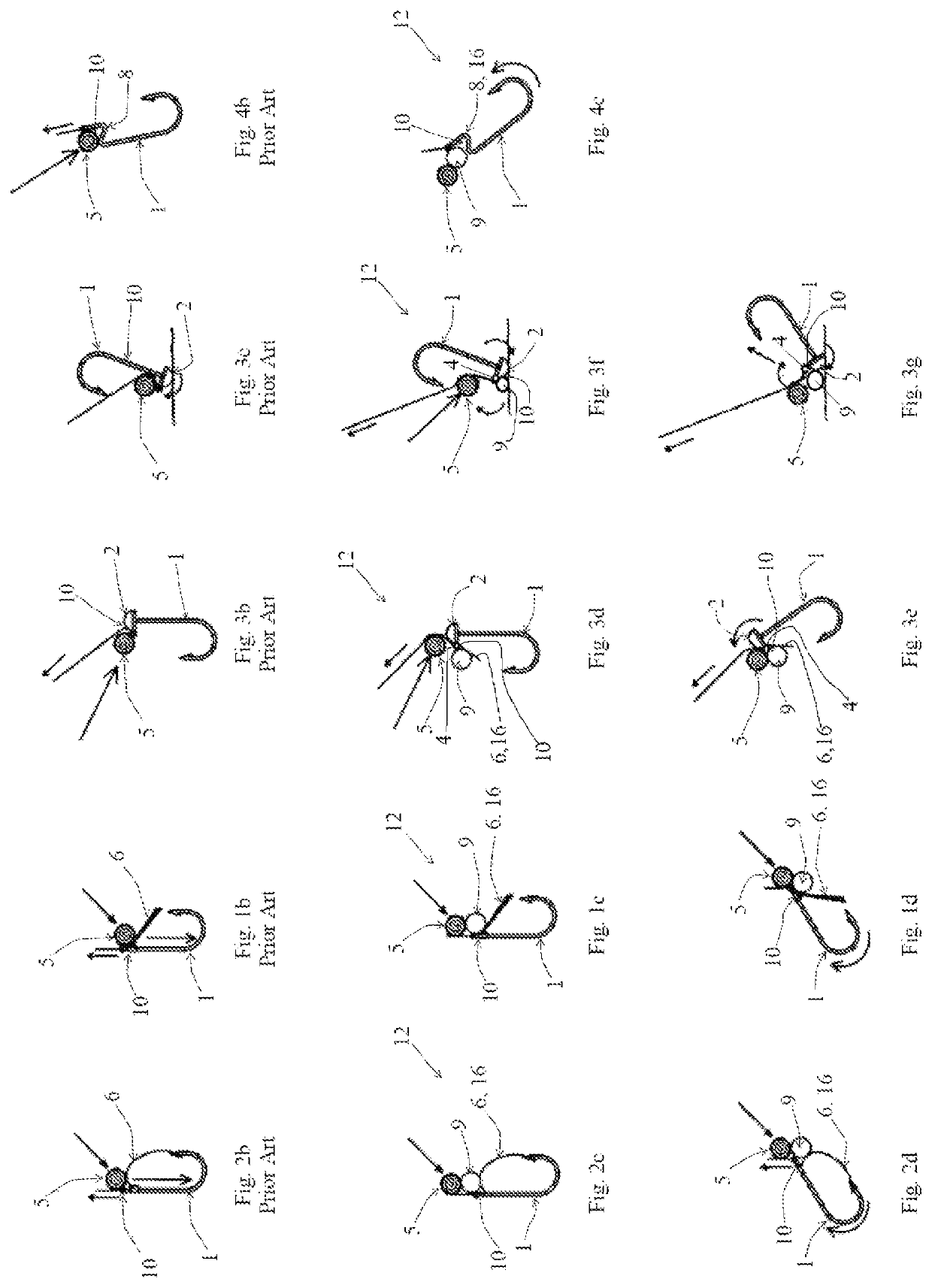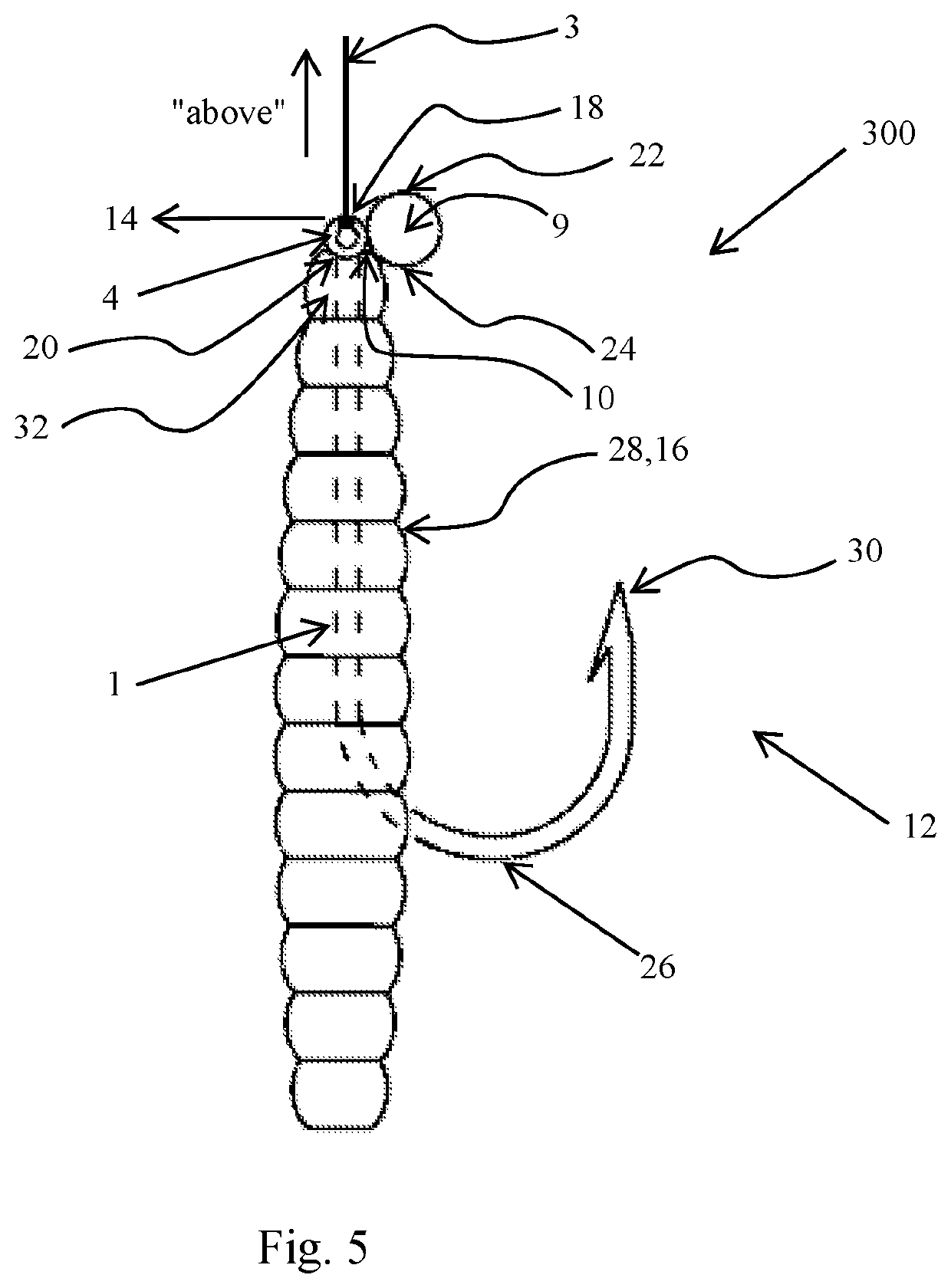Snag-free fish hook assembly, kit, and method
a hook and assembly technology, applied in the field of fishing gear, can solve the problems of not working well with fishing for certain types of fish or in certain conditions, hooks with weed guards that cannot prevent all tangles, and weed guards that cannot work well with fishing for certain types of fish, etc., to achieve the effect of reducing the rate of assembly descent, and reducing the risk of tangles
- Summary
- Abstract
- Description
- Claims
- Application Information
AI Technical Summary
Benefits of technology
Problems solved by technology
Method used
Image
Examples
Embodiment Construction
[0048]Now referring to FIGS. 1c and 2c, side views of hook assembly 12 of the present invention are provided. Like the prior art assemblies shown in FIGS. 1a and 2a, the hook assemblies 12 shown in FIGS. 1c and 2c have intermediary objects 16 that are weed guards 6. Unlike the prior art assemblies, however, the hook assemblies 12 of the present invention also include bead 9 disposed in notch 10. Instead of becoming lodged in notch 10, as shown in FIGS. 1b and 2b, obstructions 5 are prevented from entering notch 10 by the presence of bead 9. As shown in FIGS. 1d and 2d, the obstructions 5 are simply shed off of or roll off of bead 9.
[0049]FIGS. 3d-3g disclose hook assemblies 12 with an intermediary object 16 that is weighted head 2 or weed guard 6 In FIGS. 3d and 3e, eye end 32 (as shown, e.g., in FIG. 1a) includes a weighted head 2, but weed guard 6 is intermediary object 16. These embodiments are similar to the prior art assembly shown in FIGS. 3a-3c, except that the hook assemblie...
PUM
 Login to View More
Login to View More Abstract
Description
Claims
Application Information
 Login to View More
Login to View More - R&D
- Intellectual Property
- Life Sciences
- Materials
- Tech Scout
- Unparalleled Data Quality
- Higher Quality Content
- 60% Fewer Hallucinations
Browse by: Latest US Patents, China's latest patents, Technical Efficacy Thesaurus, Application Domain, Technology Topic, Popular Technical Reports.
© 2025 PatSnap. All rights reserved.Legal|Privacy policy|Modern Slavery Act Transparency Statement|Sitemap|About US| Contact US: help@patsnap.com



